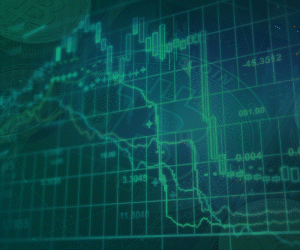Trading methods
In the 90s this chapter would be about the advantages and disadvantages of calling your broker or walking in your bank to give an order personally. There were electronic solutions back then as well, but retail traders had to wait for years to use it.
Trading has changed dramatically since the 90s due to developments in IT and communication technologies. Online trading platforms have started to spread around the 2000s, taking the place of trading via phone calls. Thanks to the popularity of forex trading and the appearance of MetaTrader platform, manual trading has shifted towards semi-automated systems, as quick strategy back testing opportunities.
Shortly after companies have emerged which process the orders of traders and robots in real time and offer this as a service. The aim of social trading is to share the trades within the community, further diversifying the capital and following the professionals.
Artificial intelligence developments have made it possible for retail traders to take advantage of fully automated trading solutions. Due to the continuous technological advancement, manual trading seems to diminish from the markets. It is important to highlight that robots used by retail forex, futures, or stock traders are much less advanced in knowledge and speed than the computers of hedge funds benefiting from Artificial Intelligence learning and Big Data analysis.
Automated trading might be tempting for beginners, believing trading will take less time this way since the robot will do all the work. This is not that simple. I have analysed the advantages and disadvantages of the different trading methods to help you decide which one you prefer.
Is it recommended for beginners?*You should start your career with manual trading. Gain experience, shape your views, and learn to take responsibility for your decisions. This will make automation easier in the future. |
|||
|
Manual trading |
Social trading |
Semi-automated trading |
Automated trading |
|
RECOMMENDED |
NOT RECOMMENDED |
||
*The categorisation only reflects the author’s personal view

Manual trading
What is manual trading?
Manual trading doesn’t mean that you are not using any decision support systems. It means that you parameterise your own orders and you send them manually to the broker. You are still going to trade manually if you’re using stock screener to choose the instruments or using calculators to size the positions or using indicators to determine entry points. Manual trading is a system which includes human decision making when opening and closing positions.
Many argue that you will be emotional and non-pragmatic during manual trading. This is true. However, in my opinion you should not shut out all your emotions. Instead, you need to learn how to control them. You need to accept that greed and fear might still appear in your trades.
Manual trading will give you experience and force you monitor the market. The information acquired during manual trading will contribute to your personality. You should be aware of the fact that manual trading increases the risk of human error when sending an order, which fails can lead to catastrophic events on your account.
Manual traders must rely on their abilities to be highly focused and disciplined all the time. Continuous self-assessment and monitoring is necessary to minimise the frequency of errors in order to ensure all trades are in the right side, at the right price, and have the right quantity.
The biggest advantage of manual traders is that they are able to quickly recognise connections and place them in the right context. This could be negative news about a competing firm that might increase the competitor company’s stock price, or a natural disaster that might influence the price of a certain currency in the long run.
Is it recommended for beginners?
Absolutely. You will get to know the different analysis methods, you can refine your techniques, and develop your skills. Manual trading will help you to assess the relationship between you and your money to control your emotions and manage your ego. It also develops your concentrations skills and will motivate you to make more responsible decisions. The knowledge acquired with manual trading will be the basis of planning your own automated trading system. Manual trading should be the first step of your trading career.

Semi-automated trading
What is semi-automated trading?
This is one of the most exciting and interesting categories. Semi-automated trading is halfway between manual and fully automated trading. In semi-automated trading the software conducts all necessary calculations, finds the best market situations, looks for opportunities matching your style, and hands over the decision to you in the critical moment. This method combines the trader’s experience and intelligence and the automated system’s analytic and fast decision-making mechanism.
The trader has opportunity to analyse the market using semi-automated systems because he owns the last step of the decision-making process. The order is sent if the trader accepts the system’s recommendation. Then, the semi-automated system will manage the position based on the trader’s predefined parameters and instructions, modify the stop price, and close the position.
In most cases the indication of semi-automated systems is given by the limit of human performance, such as speed or capacity of computing. The biggest advantage of this method is that the trader still has control over the account and equity.
Is it recommended for beginners?
It isn’t recommended for beginners; semi-automated trading should be the second step of your careers. Manual trading will teach you how markets work and their dynamics. This knowledge will be very useful for semi-automated trading. Do not have too high expectations, the software is only designed to replace the limited computing capabilities and slow reaction time of humans. You will need some IT knowledge to design semi-automated systems.

Automated trading
What is automated trading?
Automated trading systems perform the trader’s instructions without intervention based on predefined parameters. The robot will not help you make a decision since it merely just follows your instructions. Automated systems make it possible to define different rule systems to open and close positions which the robot will automatically execute. These conditions can be as simple as a moving average intersection or so complicated that you will need an IT professional’s help to define it.
Automated trading is consistent, it will always follow your strategy. There are platforms where you can choose from predefined modules to help with the programming part or you can choose to have more freedom in your strategy by programming the whole calculation and execution mechanism yourself.
Without doubt, the biggest advantage of automated system is that it doesn’t allow human emotions to influence the trading. It will also eliminate possible errors arising from typos or incorrect calculations. You can trade multiple instruments in the same time which is almost impossible with manual trading.
However, there are some disadvantages of such systems. When running the robot on your own computer you must be aware of the fact that the time to send a signal or an order to arrive on the market might take longer and the computing capabilities might not be adequate.
You need to monitor the whole process. The software might crash, or the internet connection might loss in a critical moment. Furthermore, the robot will need maintenance in case of new data connection protocols and software updates. Hence, the time spent in front of your computer might not be much less than for manual trading.
Curve fitting also known as overoptimizing is a typical mistake of beginners. You must know that an automatic system cannot be fully tested in demo environment. Consequently, live tests might result unaccounted losses which can quickly accumulate.
Finally, there are several frauds offering low quality robots targeting beginner traders who might be tempted by the promised irreal return. These robots usually open lots of small trades with narrow price targets for which special conditions are needed. You should always conduct a research when choosing a robot to buy and especially when you hand over control to a robot over your account.
Is it recommended for beginners?
Absolutely not. If you haven’t been trading, you should not start with assembling programs even if you have programming IT experience. Give yourself time to trade manually before running a robot (either built or bought) in live environment. Gain experience not only of price analysis and management techniques but also of how brokerages really work behind the scene and the technological background and time limits of receiving execution reports.

Social trading
What is social trading?
The basic thought behind social trading is that the members of the community will share their trades real time to all other members. These trades are rarely manual, usually the trades made by automated trading robots.
Social trading has appeared a decade ago when Zulutrade and eToro have developed platforms offering such trading method. These platforms will publish the community’s active member’s trade history, analyse them, and construct meaningful statistics of the available data.
The aim of traders choosing social trading is to decrease risk exposure due to the high diversification potential. Users can define how to follow and allocate other members’ trades on their accounts relative to the size of the capital. In addition, several security measures can be applied on the account. One advantage of social trading is that it eliminates emotions from trading since the decisions are made based on statistical indicators and rational considerations. Furthermore, the statistical data is inspected and reliable. However, the interpretation of the output requires experience.
The main weakness of the system arises from its size: it is difficult to choose the good and reliable providers. Another disadvantage of social trading is the slippage. Sometimes the time is significant between sending the order and the execution which may result serious losses on your account. There may be frauds who will aim to earn high commissions on the expense of the client by increasing the trading frequency.
Is it recommended for beginners?
You can start social trading as a beginner since it has not much to do with real trading from a user perspective. You should still have a basic knowledge about trading, but technical analysis might not be necessary. Instead of the financial and trading knowledge you will need to know how to parameterise the system and how to manage and optimise the screening techniques of the providers. Instead of starting with high capital you should gradually increase your account size.
![]()




